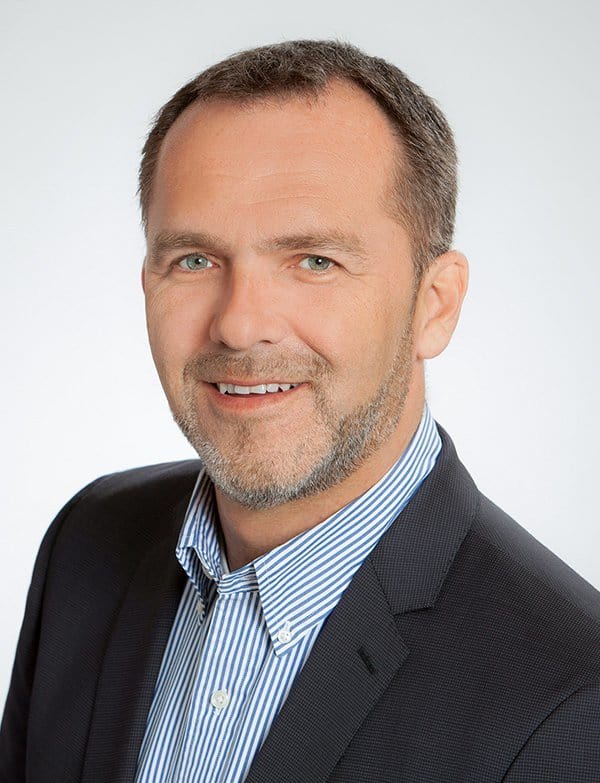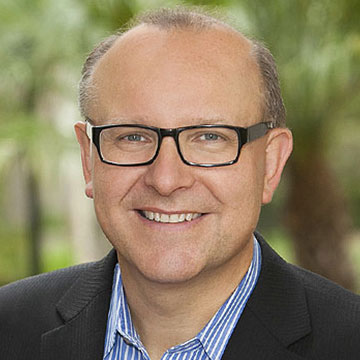
It is with mixed feelings that I introduce my final interview for Invetech’s Executive Series on Growth. As of November 1, I have been appointed to lead the Advanced Staining business unit in Leica Biosystems, and am currently in the process of handing over the reins of Invetech to Andreas Knaack. Andreas has built his career around developing and launching new products. To introduce Andreas to a broader audience, I am delighted to be speaking with him today about winning at wnnovation as my final interview for Invetech’s Executive Series on Growth.
Colin: Andreas, good morning and congratulations on your appointment. It’s great to catch up.
Andreas: Thanks Colin, good morning. Yes, great to catch up indeed, thanks for having me.
Colin: Andreas, I would like to start by asking you to give us a thumbnail sketch of your career. What companies and roles have brought you to this point?
Andreas: I’m originally from Germany, where I studied computer engineering, completing my degree in Hamburg.
After that, I joined Draeger Medical in Northern Germany first as a software engineer, then worked my way through various ranks in the R&D organization until heading up one part of their R&D for neonatal warming therapy. There, I learned much about medical devices, life-sustaining devices and the like.
Having done that for several years, I decided that I needed to sharpen my business skills and knowledge, so I joined a small venture capital firm where I learned a lot about what it takes to drive a business, raise funds, write a good business plan and also de-risk a venture. The capital venture firm unfortunately went out of business. That was the right time for me to relocate to Australia and find myself a job with Invetech in early 2004, where I started as a program manager.
Ultimately, I ended up heading the instrument design and development team at Invetech for several years. All in all, I was with Invetech for nearly nine years until I got the opportunity to head the core histology business unit in Leica Biosystems in late 2012. For that position, I relocated back to Germany where I am right now, and we are just in the transition of heading back to Australia in the coming weeks.
Colin: It is very relevant that in your last role you were running an IVD company. Many of our clients, as you are aware, also run IVD companies. I think the experience that you have gathered, the direct experience, will be very relevant to leading Invetech. A two-fold question for you: What challenges did you face as you were leading core histology and driving growth; and what approaches and strategies did you employ to overcome some of those challenges?
Andreas: The starting position within Leica Biosystems and core histology is that you have a relatively broad portfolio: we’ve got around about 40 instruments and over 4,000 consumables. But it is also a market that is slow-growing with a handful of very strong competitors who are working in this market. At Leica Biosystems, we had in some parts of our portfolio over 50 percent market share. Driving growth with those factors is hard enough, as is protecting your market position, so we embarked on a two-fold strategy. On the one hand, we had a strong focus on high-growth markets—China is one of those where we are very strong, but also others. Then, considering limited funds for R&D, it was critical to focus on our core segments and to drive strength there while following more of an OEM strategy in adjacencies and secondary parts of the portfolio. In a capital-focused and very broad portfolio—where we struggled with our R&D execution, as well as the fact that, with such a broad portfolio, you can’t work on everything at the same time—it was really important for us to shift the business towards high value-add, customer-driven solutions that deliver a continuous revenue stream for us. For histology in its nature is capital-driven. They are mostly open solutions and for us it was important to get closer to closed systems, or semi-closed systems, when delivering additional value to customers.
We conducted quite a complex strategic assessment of the portfolio, then looked at the different niches in which we were able to play, then offered this additional value through some good degree of innovation. This allowed us to then prioritize the projects and the engineering efforts that we needed to apply. At the same time, we did a lot of work on reshaping our R&D towards more focus on the application of lean principles and re-use. All this to become more efficient in the set-up of a very broad portfolio, given that you can’t work on everything, and that which you do work on, you need to do as efficiently as possible.
Colin: Yes, an excellent point that we have to be very efficient in an increasingly competitive world where commercial returns from investment in new product development are often far from assured. From your experience both in running core histology but also more broadly, what are the elements that you have to get right in the innovation game to tip the odds in your favor?
Andreas: It goes back to the principles that I learned at Invetech: it’s about being very pragmatic and realistic regarding the risks that you are facing in new product development. We need to be very open to the technical and commercial challenges that go with it. Invetech has to have a very high degree of integrity in illustrating these risks and challenges and being open with our clients, and in working together on how we manage those challenges. Clients need to know what we are facing and what to expect on the journey. As Invetech does a lot of work with start-ups, it is particularly important to focus on communicating expectations.
